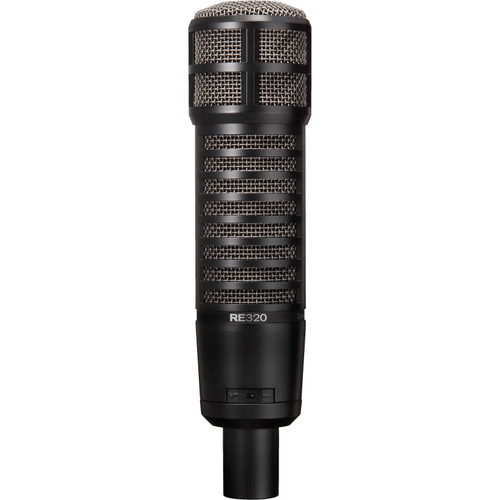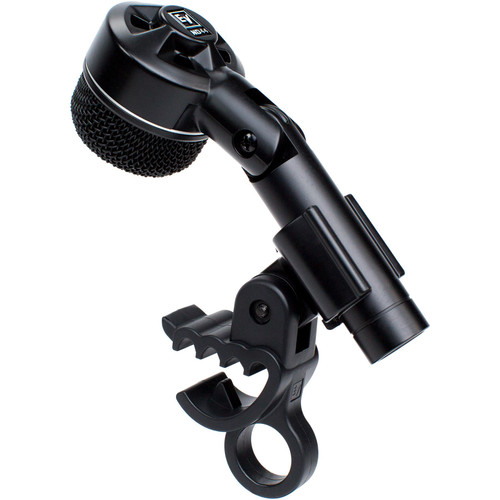The RE20 dynamic cardioid microphone is truly an industry standard, a firm favorite among broadcasters and sound engineers worldwide. Its popularity also extends into music production as a premium grade instrument microphone. Its Variable-D design and heavy-duty internal pop filter excel for close-in voice work, while an internal element shock-mount reduces vibration-induced noise. Microphone is available in different color finishes.
Electro-Voice RE20 Features
- True cardioid with no coloration at 180-degrees off-axis
- The classic sound of FM radio voices
- Smooth, natural and controlled sonic character
- Variable-D for minimal proximity effect
- Voice tailored frequency response
- Studio condenser-like performance
- Large diaphragm dynamic element
- Humbucking coil guards against line hum
- Mid-bass tone-shaping switch
About Dynamic Microphones at Sound Productions
If you’re looking for an all-purpose, heavy-duty microphone, look no further than a dynamic microphone. Equally outstanding in both the studio and live on stage, dynamic mics are an affordable, versatile, and classic option for nearly every miking application. Popular uses include live performances, studio recordings, man-on-the-street style interviews, as well as podcasts that aim for a professional “radio voice” polish.
Dynamic microphones work using a coil attached to a magnet. When sound waves cause the coil to vibrate up and down against the magnet, an electromagnetic current is induced; in simple terms, this turns the sound into an electronic signal to be channeled into a recorded version or—in the case of live sound—into a speaker to distribute the sound to the audience.

What’s in the Box?
- RE20 dynamic cardioid announcer's microphone1
- Stand clamp (model number 81715)1
- Transducer TypeDynamic
- Polar PatternCardioid
- Frequency Response45 Hz - 18 kHz
- Output Impedance150 ohms
- Sensitivity1.5 mV/Pa
- Connector3-Pin XLRM
- HousingSteel / Fawn beige or Dark charcoal
- Dimensions
- Height: 8.53" (216.7 mm)
- Diameter: 2.14" (54.4 mm)
- Net Weight: 1 lb, 10 oz (737 g)


























